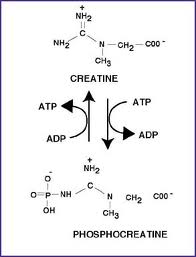Supplement Godfather


Types of Creatine
Q: There are so many different types of creatine available. Can you give me the lowdown on all the different forms and any benefits each might offer?
A: Great question. There are a lot of different creatines on the market! Let me clear up any confusion and give you a description of many popular forms.
Creatine Hydrochloride (HCl)
Creatine hydrochloride (HCl) is probably the most popular form of creatine right now and also my personal favourite. The major advantage creatine HCl offers over all other forms of creatine is greater solubility. Because creatine HCl is more soluble than other forms of creatine, the dosage required is much smaller, and in turn, this prevents gastrointestinal problems, water retention, and bloating.
Creatine Monohydrate
Creatine monohydrate is creatine with a water molecule. This is far and away the most widely studied form of creatine. There is a mountain of research to back up its effectiveness. The only downside to creatine monohydrate is that it does cause some bloating and water retention in some users.
Creatine Magnesium Chelate
Creatine magnesium chelate is a patented form of creatine branded as Creatine MagnaPower from Albion Human Nutrition, one of the world leaders in chelated mineral science. There is some solid research to support the claims Albion makes about its patented creatine. It’s shown to have greater bioavailability than creatine monohydrate, and performance is enhanced further with the magnesium component of this creatine form. The only downside to this form of creatine is the cost. It’s relatively expensive.
Creatine Phosphate
You would think that creatine phosphate would be the ideal form of creatine since creatine must bond with a phosphate group and become creatine phosphate in order to be effective in the body. But this is simply not true. Creatine monohydrate is still considered much more effective, and creatine phosphate is only about 60 percent creatine, so larger doses are required to get the right amount of creatine in the body.
Creatine Citrate
Creatine citrate is creatine bonded with citric acid. This form of creatine
is supposed to provide better absorption, but there isn’t a whole lot of scientific evidence to support that notion. Creatine citrate is made up of only about 40 percent creatine, making it an inefficient way to deliver creatine.

Creatine Nitrate
Creatine Nitrate is creatine bonded with a nitrate group. Manufacturers of creatine nitrate claim it has greater solubility and provides additional nitric oxide boosting benefi ts over other forms of creatine. However, the science to support this is still outstanding. Also, the safety of using nitrates in supplements is still in question by many researchers. Currently, there are no studies on creatine nitrate and its effects on exercise performance, strength, and muscle growth.
Creatine Anhydrous
Creatine anhydrous is creatine monohydrate with the water removed. It provides slightly more creatine than creatine monohydrate on a gram-per-gram basis, but it has never been shown to be more effective.
Creatine Ethyl Ester (CEE)
CEE is creatine with an ester attached. This form of creatine was popular for a short time, as it was supposed to provide for greater absorption. The popularity of CEE didn’t last very long as most users found it to be no more effective than creatine monohydrate, but much more expensive.
Di-Creatine and Tri-Creatine Malate
These forms of creatine are creatine bonded with malic acid. Di-creatine malate is made up of two creatine molecules and tri-creatine malate is made of up three. Neither form appears to offer any benefits over regular creatine monohydrate.
Buffered Creatine
Buffered or pH-corrected creatine is simply creatine monohydrate mixed with sodium bicarbonate (aka plain ol’ baking soda). Although buffered creatine has been heavily marketed over the years, there is no research to support the claims that it provides better absorption than creatine monohydrate. Its popularity has been declining in recent years, especially since creatine HCl hit the market.
Creatine Oroate
Creatine oroate is creatine bonded to orotic acid. This form of creatine is supposed to provide additional support for ATP production, but there is no research to support that notion. It is also more expensive than creatine monohydrate and HCl.
Effervescent Creatine
This form of creatine is simply creatine monohydrate combined with sodium
and sugar in the form of a powdered drink mix. This form of creatine might
look cool as it foams up in your shaker, but it provides no greater absorption than regular creatine monohydrate.
Micronized Creatine
Micronized creatine is simply creatine monohydrate that has been further processed to greatly reduce the particle sizes. By micronizing the creatine, its surface area is increased and this can help improve absorption
To read more about the benefits of creatine on your physique and workouts, click here!

